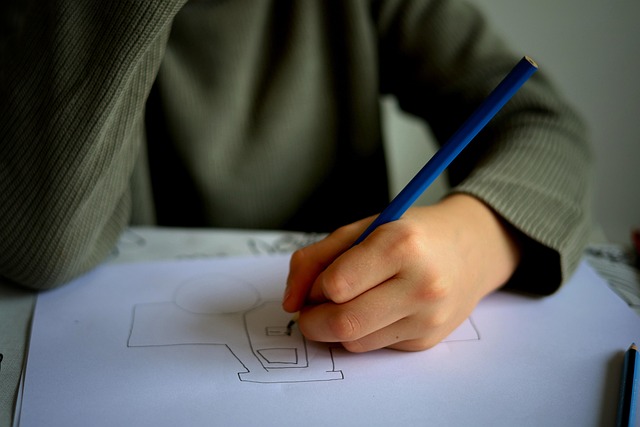How to Learn to Create Your Own Logos
Learning to create logos helps you turn ideas into simple designs that people can recognize. This article shows how to start with sketches, choose colors and shapes, and experiment with different styles. Follow step-by-step methods to practice arranging letters, symbols, and graphics to make clear and memorable logos while improving your design skills through hands-on exercises.

Creating your own logo is an empowering skill that can save you money while giving you complete creative control over your brand’s visual identity. Whether you’re starting a business, working on a personal project, or simply want to expand your design skills, learning logo creation is accessible to beginners and can develop into a valuable expertise with practice and dedication.
Understanding Logo Design Fundamentals
Before diving into the technical aspects of logo creation, it’s essential to understand what makes a logo effective. A successful logo communicates a brand’s personality, is memorable, versatile, and timeless. Study logos you admire and analyze what makes them work. Notice how simple shapes, thoughtful typography, and strategic color choices combine to create lasting impressions. Familiarize yourself with design principles like balance, contrast, alignment, proximity, and repetition. These fundamentals will guide your creative decisions and help you avoid common beginner mistakes in your logo design journey.
Essential Tools for Logo Design
You don’t need expensive software to start creating logos. Many professionals use Adobe Illustrator, but alternatives like Affinity Designer offer similar capabilities at a lower cost. For beginners, free tools like Inkscape provide vector editing capabilities necessary for scalable logo design. Online platforms such as Canva, Figma, or Vectr offer user-friendly interfaces with templates to help you get started. Remember that the tool matters less than your understanding of design principles—even simple software can produce professional results when used skillfully. As your skills advance, consider investing in industry-standard tools that offer more precision and flexibility.
Step-by-Step Logo Design Process
Developing a systematic approach to logo creation will improve your results significantly. Start with thorough research about the brand, industry, and competitors to inform your design direction. Then sketch multiple concepts on paper before moving to digital tools—this allows for rapid ideation without technical constraints. Choose the strongest concepts to refine digitally, experimenting with different color schemes, typography, and layouts. Test your designs in various contexts and sizes to ensure versatility. Finally, refine based on feedback, making sure the logo works in both color and black-and-white versions. Following this methodical process helps ensure your final logo is both thoughtful and effective.
Typography and Color Theory for Logos
Mastering typography and color theory dramatically elevates logo design quality. Typography communicates personality—serif fonts often convey tradition and reliability, while sans-serif fonts suggest modernity and simplicity. Script fonts add elegance, and display fonts create distinctive character. When selecting colors, understand their psychological impacts: blue suggests trustworthiness, red evokes passion, green represents growth. Limit your palette to 1-3 colors for maximum impact and memorability. Learn about color relationships using the color wheel to create harmonious combinations. These elements work together to create visual meaning that resonates with your target audience.
Online Courses and Resources for Logo Design
Accelerating your logo design education is easier than ever with abundant online resources. Platforms like Udemy, Skillshare, and LinkedIn Learning offer comprehensive courses taught by industry professionals. YouTube channels such as The Futur, Logos By Nick, and Will Paterson provide free tutorials covering everything from basic techniques to advanced strategies. Design blogs like Logo Design Love and Brand New offer inspiration and case studies. Consider joining communities like Behance or Dribbble to share your work and receive feedback from fellow designers. Combining structured courses with practical exercises and community involvement creates a well-rounded learning experience.
Logo Design Software Comparison
Choosing the right software can significantly impact your logo design journey. Understanding the options helps you select tools that match your skill level and budget.
| Software | Best For | Key Features | Cost Estimation |
|---|---|---|---|
| Adobe Illustrator | Professionals | Industry standard, comprehensive tools | $20.99/month |
| Affinity Designer | Budget-conscious designers | One-time purchase, professional features | $49.99 one-time |
| Inkscape | Beginners | Vector editing, free and open-source | Free |
| Canva | Quick designs | Templates, user-friendly interface | Free basic, Pro $12.99/month |
| Figma | Collaborative design | Real-time collaboration, web-based | Free basic, Pro $12/month |
Prices, rates, or cost estimates mentioned in this article are based on the latest available information but may change over time. Independent research is advised before making financial decisions.
Mastering logo design is a journey that requires patience and consistent practice. Start with simple projects and gradually tackle more complex challenges as your confidence grows. Create personal projects to build your portfolio, experiment with redesigning existing logos for practice, and seek constructive criticism to refine your skills. Remember that professional designers developed their abilities through years of practice—don’t be discouraged by initial results that don’t match your vision. With dedication to learning both technical skills and design principles, you’ll develop the ability to create logos that effectively communicate brand identities and stand the test of time.




